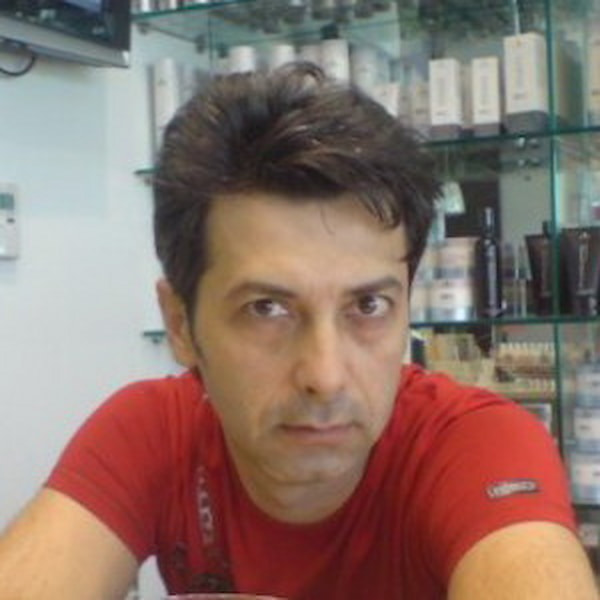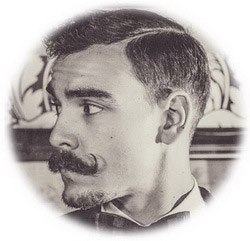- HairMaker.Gr
- Hair
- 1 likes
- 3381 views
- 2 comments
- hair, long hair

The Village Where Hair Means Life ✨
Deep in the emerald mountains of southern China’s Guangxi province lies the mythical Huangluo Village — home of the Red Yao women, renowned for their astonishingly long, jet-black hair that often exceeds two meters in length.
For the Red Yao, hair is not mere beauty — it’s heritage and spirit. Each strand symbolizes harmony, patience, and connection with nature. A woman’s hairstyle reveals her age, marital status, and personal story — a living code written in black silk.
Recognized by the Guinness World Records as the “longest-haired village in the world,” Huangluo preserves a timeless ritual that modern science is just beginning to understand: the incredible benefits of fermented rice water.
Before global beauty brands existed, these women had already mastered a natural care method that maintained shine, strength, and youth for generations. Their secret remains a poetic blend of simplicity, patience, and deep respect for the land that sustains them.
Navigate Through the Story ✨
The Rice Water Secret of the Red Yao Women ✔️
The heart of Huangluo’s beauty lies in a simple bowl of rice. After rinsing or boiling it, the women keep the milky water, let it ferment for one or two days, and then use it as a natural shampoo and conditioner. The result? Stronger, shinier hair that never seems to age.
During fermentation, rice water develops a mild sour scent and fills with amino acids, vitamin E, antioxidants, and minerals that penetrate the hair cuticle. Scientists later discovered inositol, a compound that helps repair damage and prevent breakage — confirming what the Red Yao women knew for centuries.
Each batch is slightly different. Some women add tea leaves, ginger, or citrus peel for fragrance and extra nutrients. The rinse is stored cool and used two to three times weekly to cleanse, detangle, and restore balance.
Unlike modern shampoos loaded with sulfates, this ancestral formula leaves behind a thin protective layer that keeps hair hydrated and glossy. It balances scalp pH naturally and prevents irritation — even under the humid mountain climate.
Today, stylists around the world call it the “ancient conditioner of Asia.” Whether your hair is dry, colored, or curly, a simple rice-water rinse can rejuvenate it without chemicals. For the women of Huangluo, this isn’t a beauty trick — it’s a sacred tradition connecting body, soul, and nature.
The Cultural Rituals and Symbolism Behind Long Hair in Huangluo
In Huangluo Village, hair is far more than beauty — it is sacred. For the Red Yao women, every stage of life is marked by a specific ritual involving their hair, and each hairstyle reflects their personal and spiritual journey. The village’s deep-rooted customs link hair directly to health, fertility, and destiny.
Traditionally, a woman could only cut her hair once in her lifetime — on her eighteenth birthday. The cut hair was not discarded but given to her grandmother, who would weave it into an ornamental headdress. This symbolized the transition from girlhood to womanhood. From that day on, her hair became a visible expression of maturity, pride, and readiness for marriage.
Before the 1980s, strict taboos governed who could see a woman’s hair. If a man outside her family accidentally glimpsed it, he was expected to live with her family for three years — as their son-in-law. This ancient law protected the woman’s dignity and reinforced the sacred nature of her hair, believed to contain her life force and spiritual energy.
Each hairstyle communicates a message to the community: a bun at the front of the head shows that a woman is married with children, while a wrapped-around crown indicates that she is married but childless. A scarf concealing her hair means she is single and seeking a husband — the only person who will one day have the right to see her hair unveiled. These silent signals replace words, preserving respect and modesty.
Even today, as tourism brings change, the women of Huangluo preserve their traditions through public ceremonies. They sing in groups, untie their hair in rhythmic movements, and share stories of ancestry and love. This performance is not vanity; it’s an act of cultural resilience — proving that authenticity can thrive in the modern world without losing its roots.
✨ In Red Yao belief, long hair equals long life. It embodies prosperity, patience, and harmony with the earth. Each woman treats her hair as a living extension of her identity — carefully washing, combing, and wrapping it every morning with the same devotion others give to prayer. This is why, even after decades, their hair remains unbelievably strong and dark, untouched by gray until late in life.
The Ritual of the One-Time Haircut ✂️
Among the Red Yao women of Huangluo, one of the most symbolic acts in life happens only once — the ritual haircut that marks a girl’s transformation into womanhood. It is not a casual trim or a fashion statement; it is a deeply spiritual event that seals her connection with her ancestors and her destiny.
When a girl reaches eighteen, her relatives gather to celebrate her transition. The entire village joins in traditional songs and drumming while an elder woman, often a grandmother, cuts the young girl’s hair to ear length in one slow, deliberate motion. The cut hair — her childhood — is never thrown away. Instead, it becomes an heirloom, offered to her grandmother and kept as a blessing for future generations.
Later, that same hair is woven into an intricate headdress that the woman will wear every day for the rest of her life. This unique crown consists of three parts: the hair she has grown since marriage, the hair cut at eighteen, and any strands that have naturally fallen and been collected during combing. Together, they form a circle representing continuity — a life with no beginning and no end.
The ceremony is followed by days of singing, dancing, and the sharing of fermented rice wine. As night falls, the women tell stories of the ancestors whose wisdom guides them. This moment is a powerful reminder that hair carries memory; every strand holds emotions, struggles, and triumphs passed from mother to daughter.
Before the introduction of tourism, the Red Yao women guarded this ritual in secrecy. No outsider was allowed to witness the haircut. In their belief, cutting hair before the appointed age would shorten life or invite misfortune. It was an intimate pact with nature: you could only release your childhood when your spirit and body were ready.
✅ Today, while the younger generation has adapted to modern life, this ritual remains one of the strongest expressions of identity. Even those who have moved to nearby towns return home for the occasion. The symbolic haircut connects them back to the mountains, their ancestors, and the eternal rhythm of life that the Red Yao culture so beautifully protects.
Hair as a Symbol of Power, Prosperity, and Longevity
In Red Yao culture, hair is not merely a physical feature — it is a living emblem of strength, good fortune, and balance. The people of Huangluo believe that the longer and healthier one’s hair grows, the greater their spiritual power and luck will be. Hair is seen as a visible extension of life energy — a connection between body and soul.
Each woman nurtures her hair with devotion equal to prayer. Every morning, the ritual begins with a slow combing session using a wooden brush dipped in fermented rice water. This act is accompanied by soft humming or chanting — a meditative rhythm said to attract prosperity. To neglect the hair would be to neglect one’s blessings.
The Red Yao also believe that hair stores memories and wisdom. The energy of past generations flows through it, protecting the wearer from harm. That is why cutting or burning hair carelessly is considered disrespectful to the ancestors. Even fallen strands are carefully gathered, symbolizing that nothing in life should be wasted.
Legends tell of women whose long hair saved their families from famine and misfortune. Their hair was said to absorb the vitality of the mountains and rivers — a metaphor for strength drawn from nature. This belief shapes every detail of Red Yao daily life: from the way they wash in spring water to how they braid and wrap their hair before sunrise.
✨ Even the local songs carry verses praising hair as the “black silk of fortune.” During festivals, women proudly display their long braids in communal dances, their movements echoing waves of flowing power. The villagers believe that this display brings fertility, wealth, and longevity not only to the dancers but to the land itself.
For outsiders, these customs may seem poetic — yet for Huangluo’s women, they are living proof that beauty and spiritual harmony can coexist. Their glossy black hair has become both armor and symbol: a radiant crown earned through patience, natural care, and reverence for tradition. To them, true beauty is not purchased — it is cultivated through respect for life.
Modern Influence and the Transformation of the Red Yao Tradition
When tourism reached Huangluo Village in the late 1980s, the Red Yao way of life began to change. Visitors were fascinated by the women’s two-meter-long hair and ancient beauty secrets, and soon the village became known worldwide as the “Long Hair Village.” ✨
At first, locals feared their sacred traditions might be diluted, but instead tourism brought opportunity. Performances were organized where women sang, combed, and displayed their hair in rhythmic movements. The shows provided income, keeping the younger generation close to home instead of leaving for big cities.
This exposure, however, introduced new challenges. Some villagers began using modern shampoos or styling tools, curious to compare results. Others noticed hair becoming drier or thinner after abandoning the fermented-rice ritual. Gradually, many returned to their roots, realizing that the secret from their ancestors still worked best.
Today, Huangluo balances ancient wisdom and modern awareness. Young women run eco-friendly workshops teaching visitors to make DIY rice-water shampoo while explaining cultural respect. Elders ensure authenticity remains intact. Rather than a museum village, Huangluo has evolved into a living classroom for sustainable beauty.
The Red Yao legacy continues to inspire brands and researchers worldwide. Major cosmetic companies have analyzed the fermented liquid, yet none have reproduced its purity. Its magic lies not only in chemistry but in the discipline, patience, and gratitude of the women who created it.
What Science Says About Fermented Rice Water
Modern laboratories have confirmed much of what the Red Yao already knew. Fermented rice water contains inositol, ferulic acid, and vitamin E, compounds proven to strengthen hair and reduce surface friction. This lowers breakage by up to 16% in repeated tests. The antioxidants neutralize free radicals that cause dullness and premature graying.
Unlike chemical conditioners that coat hair temporarily, rice-water molecules penetrate deep into the cortex, repairing structural gaps. Researchers also observed improved elasticity — hair bends instead of snapping. The lightly acidic pH of fermented rice water (around 5.0) helps close the cuticle, increasing shine and smoothness.
Dermatologists note its gentle nature makes it ideal for sensitive scalps. The amino acids act as a natural humectant, drawing moisture from the air. Even in humidity, the hair maintains bounce and volume. No wonder modern “rice-protein” formulas in luxury haircare draw inspiration directly from Huangluo.
✅ Science has finally validated ancestral knowledge: true nourishment comes from simple, unprocessed ingredients working in harmony with biology. The Red Yao practice is the perfect bridge between tradition and evidence-based care.
How to Make Your Own Rice-Water Shampoo at Home ✅
Re-creating the Red Yao ritual is simple and inexpensive. All you need is rice, water, and a little patience. Follow these steps to prepare a batch similar to the original mountain recipe.
- Rinse one cup of uncooked rice to remove impurities.
- Add two cups of clean water and let it soak for 30 minutes.
- Stir well and pour the cloudy water into a clean glass jar.
- Leave the jar covered with cloth at room temperature for 24–48 hours until it smells slightly sour — the sign of fermentation.
- Boil the liquid for 5 minutes to stabilize it, then cool completely.
- Store in the refrigerator for up to one week.
You can customize it with a few drops of rosemary, lavender, or tea-tree oil for fragrance and scalp stimulation. Massage gently onto wet hair, let sit for 5 minutes, and rinse thoroughly. Repeat 2–3 times a week. ✨
This natural rinse strengthens roots, restores shine, and promotes steady growth — proof that effective beauty never needs chemicals.
Tourism and Economic Growth in the Long Hair Village
Tourism transformed Huangluo from one of Guangxi’s poorest villages into a symbol of cultural pride. The women now earn an average of $300 per month during high season by performing songs, hair-combing shows, and selling handmade crafts.
Visitors walk along bamboo bridges, buy local teas, and learn how rice water is prepared. Every purchase supports community projects — schools, clean-water systems, and micro-farms. The women manage most activities themselves, ensuring independence and authenticity.
Still, balance is essential. The elders remind guides that performances are sacred, not entertainment. Part of each ticket contributes to maintaining temples and conserving forest areas that protect the village’s ecosystem.
Huangluo’s story proves that cultural preservation and economic survival can walk hand in hand — when respect leads the way. ✔️
Global Inspiration — What the World Can Learn from Huangluo
The legend of the Long Hair Village has traveled far beyond China. Beauty influencers, natural-care enthusiasts, and even dermatologists mention the Red Yao method as proof that sustainable, chemical-free practices can achieve incredible results.
Western salons now experiment with fermented extracts, while eco-brands highlight “rice-water technology.” Yet few remember that behind every formula stands a community of women who maintained balance with nature for centuries.
Huangluo teaches a powerful lesson: progress doesn’t require abandoning tradition. Instead, modern science and ancient ritual can coexist, each elevating the other. True innovation often comes from looking back — not forward.
For the global beauty industry, this story is both inspiration and reminder that authenticity, patience, and respect are still the most effective ingredients for success. ✨
The Everlasting Legacy of the Red Yao Women
The story of Huangluo is more than a cultural curiosity — it is a celebration of resilience, simplicity, and respect. Generations of Red Yao women have proven that true beauty grows from the harmony between human beings and nature.
Their shining black hair stands as a living monument to patience and discipline. It reminds us that sustainable care isn’t a modern trend — it’s ancient wisdom rediscovered. The fermented rice water, the songs, the rituals: together they form a philosophy where self-care equals self-respect.
Today, the Long Hair Village continues to thrive, teaching visitors from all over the world that beauty can be humble, ethical, and eternal. As the Red Yao women say: “The longer the hair, the longer the blessings.”
✅ May this message travel beyond the mountains of Guangxi — a gentle reminder that when tradition meets gratitude, even something as simple as washing one’s hair can become a timeless ritual of life. ✨
Frequently Asked Questions
Next Articles
Get 10% Off Your First Order!
Subscribe to our newsletter and receive hair care tips, new arrivals, and exclusive offers straight to your inbox.
- ✔️ No spam – ever.
- ✔️ You choose what you want to receive.
- ✔️ 10% discount on your first purchase.
Only benefits. No fuss.

Giannis – Owner of HairMania Greece & Founder of HairMaker.Gr
Professional hairstylist with 25 years of experience in both men's and women's grooming. Owner of HairMania Greece and founder of HairMaker.Gr.
Alongside the HairMaker.Gr team, I publish content based on real salon tests, client feedback, and hands-on professional experience.
Got questions about hair care or grooming? Email us at info@hairmaker.gr.
Follow us:
@hairmakergr | @hairmaniagr
Last updated:
Reviewed and fact-checked by Giannis – Professional hairstylist with 25 years of experience















Comments (2)